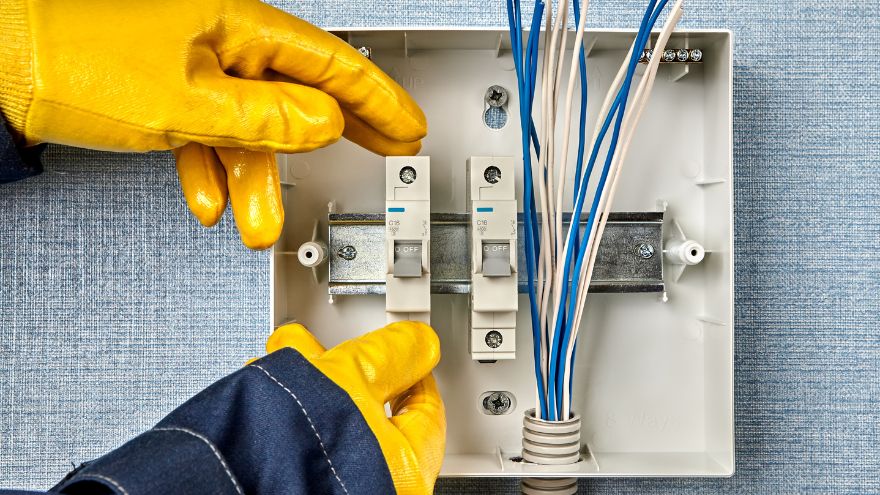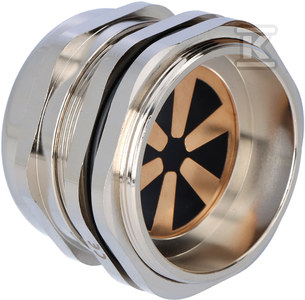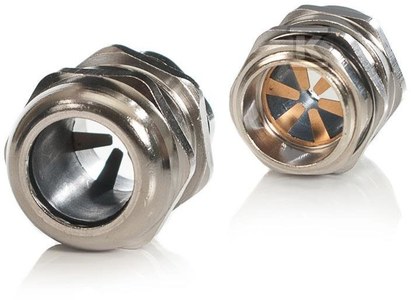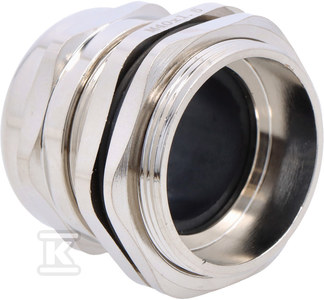Cable glands, or more correctly, cable glands, are the basis for safe, long-term use of cables and devices. What exactly do these items do? What are their types? And what should you remember when installing cable glands? Find out the answers to the most frequently asked questions about cable glands and find the optimal solution for your project at the Onninen electrical wholesaler.

Check cable glands at the Onninen electrical wholesaler
What are cable glands used for?
Cable glands, also known as cable glands, cable grommets, cable glands or cable glands, are electrotechnical accessories that provide protection and sealing of cable entries. The glands allow for safe and solid routing of cables through the housings of electrical devices. The cable entry is precisely sealed, so the devices are effectively protected against moisture, dust and dust, which extends their service life and enables proper operation.
 Additionally, the use of a bushing provides reliable protection against twisting the cable inside the equipment. The cable does not kink and becomes much more resistant to breaks or other mechanical damage, e.g. as a result of contact with sharp walls. A high-quality, correctly installed cable gland prevents the cable from being torn out from the electrical device. Thanks to cable glands, both cables and machines can be operated longer and safer.
Additionally, the use of a bushing provides reliable protection against twisting the cable inside the equipment. The cable does not kink and becomes much more resistant to breaks or other mechanical damage, e.g. as a result of contact with sharp walls. A high-quality, correctly installed cable gland prevents the cable from being torn out from the electrical device. Thanks to cable glands, both cables and machines can be operated longer and safer.
Cable glands are used to seal cable passages not only in the energy industry, but also in the telecommunications, power, control, chemical, food and agricultural industries. They are used in rail and sea transport and in many other industries.
What should you remember when installing cable glands?
Cable gland is generally easy to install, even for novice installers. The special design allows cables to be passed through the housings of various electrical devices, machines and switchboards. The most important thing is to select cable glands with parameters adequate to the technical requirements of the installation and specific operating conditions. It is worth buying glands only from proven manufacturers and suppliers who guarantee the quality of the products and the ease of installation.
What types of cable glands are there?
 Cable glands have many applications, which is why there are various types of bushings on the market. They differ, among others: dimensions, material composition, degree of protection, resistance to extreme temperatures, thread type, additional security features and even colors. Particular attention should be paid to the intended use of the gland for cables of specific diameters. For example, a model for cables with a diameter of 3 to 6.5 mm will work in various types of electrical and telecommunications installations.
Cable glands have many applications, which is why there are various types of bushings on the market. They differ, among others: dimensions, material composition, degree of protection, resistance to extreme temperatures, thread type, additional security features and even colors. Particular attention should be paid to the intended use of the gland for cables of specific diameters. For example, a model for cables with a diameter of 3 to 6.5 mm will work in various types of electrical and telecommunications installations.
Cable glands are often divided according to the material they are made of. On this basis, we can distinguish:
Any cable entry, regardless of the material, as long as it has a solid construction, can offer excellent tightness and maximum resistance to shocks, vibrations and atmospheric factors.
Cable glands at the Onninen wholesaler
 In the Onninen electrical wholesaler you will find only certified, solidly made and easy to install cable glands. We offer both extremely durable metal glands with metric thread, as well as guides made of modern plastics. Our assortment includes cable glands with a very high degree of protection IP68. The IP68 tightness class means complete resistance to water - even after long-term immersion.
In the Onninen electrical wholesaler you will find only certified, solidly made and easy to install cable glands. We offer both extremely durable metal glands with metric thread, as well as guides made of modern plastics. Our assortment includes cable glands with a very high degree of protection IP68. The IP68 tightness class means complete resistance to water - even after long-term immersion.